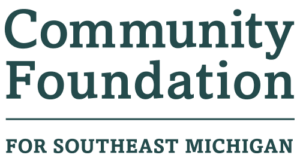“I still don’t get it”: TLC for your clients’ QCDs

Despite the Qualified Charitable Distribution’s (QCD) position as a financial media darling, mentioned in hundreds of articles every week, it’s still not an easy concept to get your head around. This is not only true for clients, but also for advisors whose areas of practice don’t typically include philanthropy.
The confusion is understandable because several legal and tax issues are in play with a QCD:
- Eligibility age (QCDs are available to your clients who’ve reached the age of 70 ½)
- Rules for Required Minimum Distributions (RMDs) from IRAs (which clients must start taking for the year they reach age 72 [or 73 if the client reached age 72 after December 31, 2022])
- Okay, let’s pause for a moment! The difference in age requirements alone is already confusing!
- The types of charities that can receive Qualified Charitable Distributions (e.g., donor-advised funds at the community foundation are not eligible, but designated funds and field-of-interest funds at the community foundation are eligible)
- The maximum amount your client can give through a QCD is $100,000 for 2023, but that’s increasing to $105,000 for 2024 due to inflation adjustments
- The mechanics of executing a QCD are, well, a hassle!
All of this adds up to a pretty complex set of requirements for executing a QCD, including:
- A QCD allows a taxpayer aged 70 ½ or older to donate directly to a qualifying organization from their traditional IRA, but unlike a typical distribution, the amount directly distributed does not add to the donor’s taxable income.
- A bonus is that for clients required to take RMDs, the QCD can count toward the RMD, though conditions apply.
- Among those RMD-specific conditions is that the QCD amount must be among the first funds to exit the IRA in a given tax year, at least within the RMD amount, to receive tax deductibility. Thus, the QCD must be taken early enough in the tax or calendar year, preferably in January, so as not to occur after a full RMD has been taken out by the donor.
- QCDs must be appropriately tracked and acknowledged by the charitable recipient (and reflected in a corroborating 1099 tax form) and properly recorded on your client’s tax return as distinct from the RMD (IRA sponsors typically do not make the distinction on their forms).
Yes, it’s a lot.
Here’s the thing, though. If you have clients who are 70 ½, own an IRA, and are charitably inclined, you absolutely must consider the QCD as an option. And it does not need to be hard. Just reach out to the community foundation, and we’ll walk you through it, every step of the way.
While QCDs are a win-win in many ways, and particularly with the decline of itemized filers since 2017 when the standard deduction increased, executing a QCD typically requires a lot of TLC, as they say.
The Community Foundation is here to help! Contact DonorServices@cfsem.org for more information.
